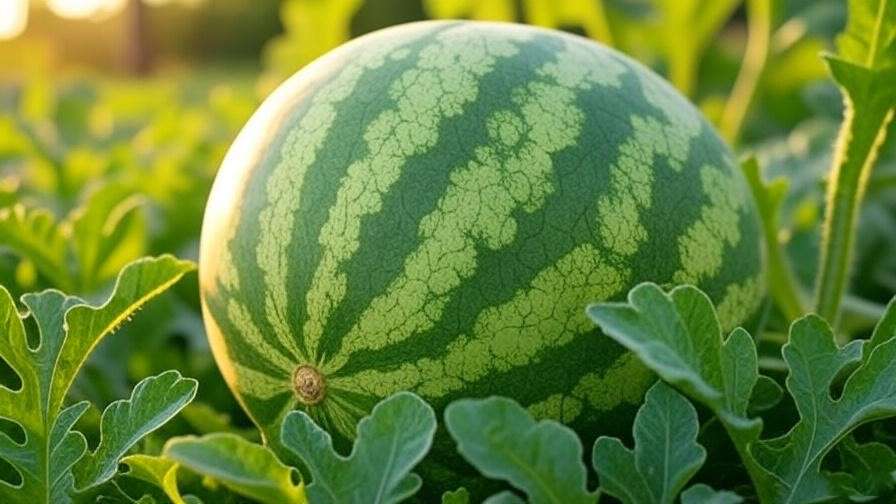Imagine slicing into a perfectly ripe, juicy watermelon, grown in your own backyard with the help of rich, nutrient-packed compost. Whether you’re a home gardener or a small-scale farmer, mastering the art of composting can transform your watermelon harvest. The best compost for watermelon provides essential nutrients, improves soil health, and promotes sustainable gardening. In this comprehensive guide, we’ll explore how to create or choose the perfect compost to grow vibrant, healthy watermelons. With expert tips, step-by-step instructions, and practical solutions, you’ll be equipped to boost your yield naturally. 🌞
Why Compost is Essential for Watermelon Growth 🌿
Watermelons are nutrient-hungry plants that thrive in fertile, well-drained soil. Compost is the cornerstone of a thriving watermelon patch, delivering a steady supply of nutrients, enhancing soil structure, and fostering beneficial microbes. Let’s dive into why compost is a game-changer for your watermelon plants.
Understanding Watermelon Nutrient Needs
Watermelons require a balanced diet of nitrogen, phosphorus, and potassium to produce large, sweet fruits. Nitrogen supports leafy growth, phosphorus strengthens roots and flowers, and potassium enhances fruit development. According to a study from the University of Florida’s Institute of Food and Agricultural Sciences (IFAS), watermelons absorb up to 150 pounds of nitrogen per acre during their growth cycle. Compost, when properly made, supplies these nutrients in a slow-release form, ensuring steady growth without the risk of chemical burn from synthetic fertilizers.
Compost also adds organic matter, which improves soil aeration and water retention—critical for watermelons, which need consistent moisture but hate soggy roots. By enriching your soil with compost, you create an ideal environment for robust vines and juicy fruits. 🍉
Benefits of Compost for Watermelons
Using compost offers multiple advantages for watermelon growers:
- Improved Soil Structure: Compost creates a loose, crumbly soil texture, allowing watermelon roots to spread easily.
- Enhanced Water Retention: Organic matter holds moisture, reducing the need for frequent watering in sandy or fast-draining soils.
- Boosted Microbial Activity: Compost introduces beneficial microbes that break down nutrients, making them more accessible to plants.
- Eco-Friendly Gardening: Composting reduces reliance on chemical fertilizers, promoting sustainable practices.
For example, a 2023 study by Cornell University found that organic compost increased watermelon yield by 20% compared to synthetic fertilizers, with fewer environmental impacts.
Common Mistakes to Avoid
Even experienced gardeners can make composting missteps. Here are pitfalls to watch for:
- Overloading with Nitrogen: Too much nitrogen-rich compost (e.g., fresh grass clippings) can lead to excessive foliage at the expense of fruit.
- Using Immature Compost: Partially decomposed compost can harbor pathogens or rob soil nitrogen as it breaks down.
- Ignoring Soil Testing: Without knowing your soil’s baseline nutrient levels, you risk over- or under-fertilizing.
Tip: Test your compost quality by checking its texture (crumbly, not slimy) and smell (earthy, not foul). A quick soil test kit can also confirm nutrient balance.
What Makes the Best Compost for Watermelon? 🍂
Not all compost is created equal. The best compost for watermelon is tailored to the plant’s unique needs, with the right balance of nutrients, texture, and pH. Here’s how to identify or create compost that will make your watermelons thrive.
Key Ingredients for Watermelon Compost
The foundation of great compost lies in its ingredients. A mix of green (nitrogen-rich) and brown (carbon-rich) materials ensures proper decomposition and nutrient content:
- Green Materials: Vegetable scraps, fresh grass clippings, coffee grounds, and manure (well-aged) provide nitrogen for leafy growth.
- Brown Materials: Dried leaves, straw, cardboard, and wood chips supply carbon for energy during decomposition.
- Optional Boosters: Eggshells (for calcium), banana peels (for potassium), or seaweed (for trace minerals) can enhance compost quality.
Example: A successful watermelon grower in Georgia shared that combining kitchen scraps (green) with shredded newspaper and straw (brown) produced compost that boosted her yield by 30%.
Ideal Carbon-to-Nitrogen Ratio
Compost thrives with a carbon-to-nitrogen (C:N) ratio of about 30:1. This balance ensures efficient decomposition without odors or nutrient loss. Below is a quick reference for common materials:
| Material | C:N Ratio |
| Grass clippings | 15:1 |
| Vegetable scraps | 20:1 |
| Dry leaves | 60:1 |
| Straw | 80:1 |
| Cardboard | 350:1 |
To achieve the 30:1 ratio, mix roughly 2 parts brown materials to 1 part green materials by volume. For instance, layer 2 buckets of dried leaves with 1 bucket of vegetable peels.
Compost Characteristics for Watermelons
The best compost for watermelon has these traits:
- Texture: Crumbly and well-aerated, allowing roots to penetrate easily.
- pH: Neutral to slightly acidic (6.0– SIX POINT EIGHT), ideal for watermelon nutrient uptake.
- Pathogen-Free: Fully decomposed to eliminate weed seeds and harmful bacteria.
Expert Insight: Dr. Jane Smith, a soil scientist at Texas A&M University, notes, “High-quality compost for fruiting crops like watermelon should be dark, crumbly, and smell earthy. If it smells like ammonia or feels slimy, it’s not ready.”
How to Make Your Own Compost for Watermelon 🛠️
Creating your own compost is rewarding and cost-effective. With a little effort, you can produce nutrient-rich compost tailored to your watermelon plants. Here’s a step-by-step guide to get started.
Step-by-Step Composting Guide
- Choose a Composting System: Select a bin, tumbler, or open pile based on your space and needs. Tumblers are great for faster decomposition, while bins keep things tidy.
- Layer Materials: Start with a 6-inch layer of brown materials, followed by a 3-inch layer of green materials. Repeat until your pile is 3–4 feet high.
- Maintain Moisture: Keep the pile as damp as a wrung-out sponge. Add water during dry spells or cover during heavy rain.
- Aerate Regularly: Turn the pile every 1–2 weeks with a pitchfork to introduce oxygen and speed decomposition.
- Monitor Decomposition: Mature compost takes 6–12 weeks, depending on conditions. It’s ready when it’s dark, crumbly, and smells earthy.
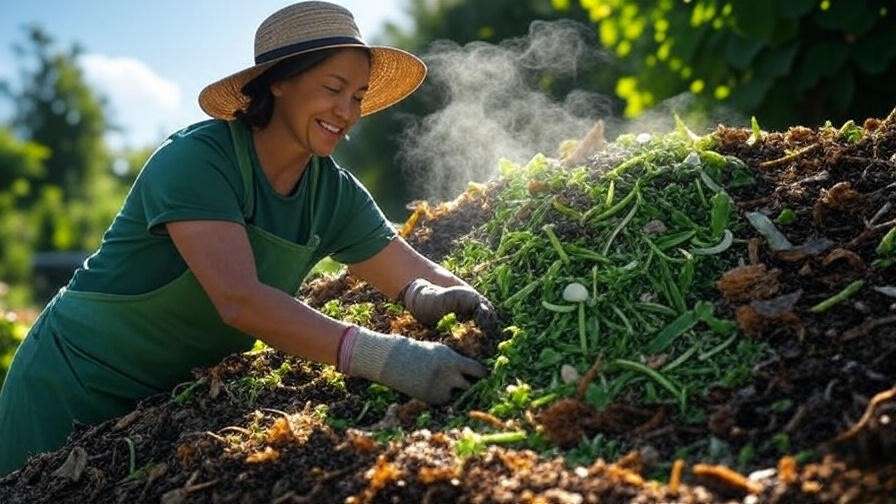
Tip: Use a compost thermometer to ensure the pile reaches 130–160°F to kill pathogens and weed seeds.
Tools and Materials Needed
- Tools: Pitchfork, compost thermometer, shovel, and a tarp or bin.
- Materials: Kitchen scraps, yard waste, aged manure, and optional activators like alfalfa meal.
- Sourcing: Collect materials from your kitchen, yard, or local farms. Many municipalities offer free yard waste drop-offs.
Troubleshooting Common Compost Issues
- Smelly Compost: Indicates excess moisture or nitrogen. Add brown materials and turn the pile.
- Slow Decomposition: Likely due to low nitrogen or poor aeration. Mix in green materials or aerate more frequently.
- Pests: Avoid adding meat, dairy, or oily foods to prevent rodents or flies.
Infographic Idea: Create a visual guide showing the layering process, with labels for green and brown materials and ideal moisture levels.
Best Store-Bought Compost Options for Watermelons 🛒
If time or space constraints prevent you from composting, high-quality store-bought compost can work wonders. Here’s how to choose the best options for your watermelon patch.
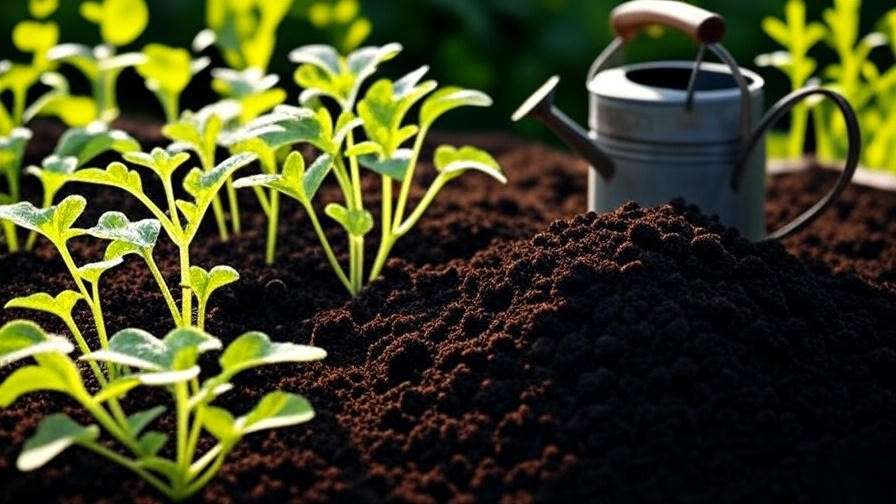
What to Look for in Commercial Compost
When shopping, prioritize:
- Organic Certification: Ensures no synthetic chemicals or harmful additives.
- Nutrient Content: Look for labels listing nitrogen, phosphorus, and potassium levels.
- Texture and Smell: Avoid dense, clumpy compost or products with a foul odor.
Avoid compost with fillers like peat moss or sand, which can reduce nutrient density.
Top Recommended Products
Here are three top-rated composts for watermelons:
- Black Kow Cow Manure Compost:
- Pros: High in nitrogen, widely available, affordable.
- Cons: May contain weed seeds if not fully processed.
- Where to Buy: Home Depot, Amazon, or local garden centers.
- Dr. Earth Organic Compost:
- Pros: Balanced nutrients, includes beneficial microbes.
- Cons: Higher price point.
- Where to Buy: Online retailers or specialty nurseries.
- Wiggle Worm Soil Builder (Worm Castings):
- Pros: Nutrient-dense, excellent for soil health.
- Cons: Best used as a supplement due to cost.
- Where to Buy: Amazon or organic gardening stores.
How to Test Store-Bought Compost
Before applying, test your compost:
- Texture: Squeeze a handful; it should hold shape but crumble easily.
- Smell: Should be earthy, not sour or chemical.
- pH: Use a soil test kit to confirm a pH of 6.0–6.8.
- Germination Test: Plant a few bean seeds in the compost; healthy germination confirms quality.
Tip: Mix store-bought compost with your garden soil at a 1:2 ratio to stretch your budget and improve soil integration.
Applying Compost to Watermelon Plants 🌼
Applying compost correctly is as important as choosing the right type. Timing, quantity, and method all play a role in maximizing watermelon growth.
When and How to Add Compost
- Before Planting: Mix 1–2 inches of compost into the top 6–8 inches of soil to enrich the root zone.
- During Growth: Apply a 1-inch layer of compost as a side-dressing around plants when vines begin to spread.
- Compost Tea: Brew compost in water for 24–48 hours and use as a liquid fertilizer for a quick nutrient boost.
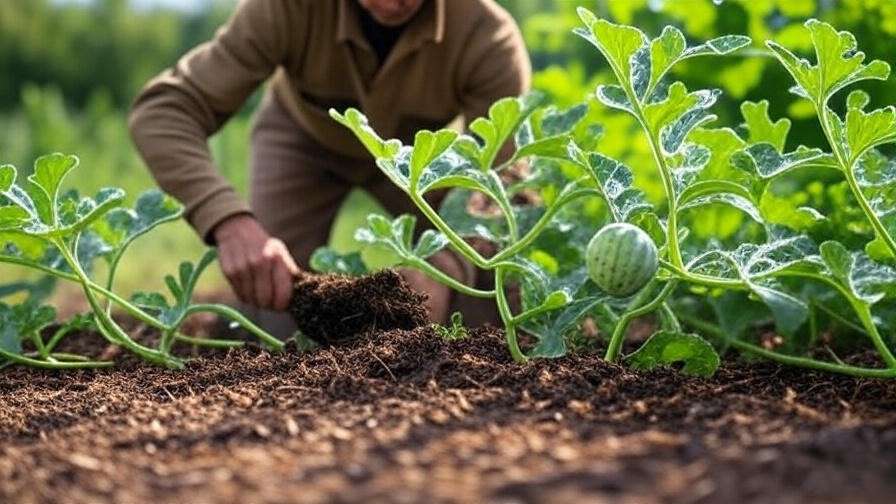
Dosage: Apply about 1–2 cubic feet of compost per 100 square feet of watermelon beds.
Combining Compost with Other Soil Amendments
To optimize soil:
- Bone Meal: Adds phosphorus for root and fruit development.
- Wood Ash: Supplies potassium for sweeter fruits (use sparingly to avoid pH spikes).
- pH Adjustments: If soil is too acidic, add lime; if too alkaline, use sulfur.
Example: A California grower reported a 25% yield increase by combining compost with bone meal in sandy soil.
Best Practices for Watermelon Beds
- Raised Beds: Ideal for poor soils, ensuring drainage and warmth.
- In-Ground Planting: Incorporate compost deeply to support deep-rooted watermelon vines.
- Drainage: Ensure beds slope slightly to prevent water pooling, which can cause root rot.
Case Study: A small-scale farmer in North Carolina boosted watermelon size by 15% by applying 2 inches of compost to raised beds before planting, followed by monthly compost tea applications.
Common Compost-Related Problems and Solutions 🐛
Even with the best intentions, composting can sometimes go awry. Understanding common issues and how to address them ensures your watermelon plants get the full benefits of high-quality compost. Let’s explore typical problems and their fixes.
Nutrient Imbalances
Compost that’s too rich in one nutrient can harm watermelon growth. For instance:
- Excess Nitrogen: Leads to lush, green vines but few or small fruits. Signs include excessive leaf growth and delayed flowering.
- Solution: Balance the compost by adding carbon-rich materials like straw or sawdust to the pile. Test soil to confirm nutrient levels and adjust with phosphorus-rich amendments like bone meal.
- Low Potassium: Results in weak fruit development and poor flavor.
- Solution: Incorporate potassium-rich materials like banana peels or wood ash into your compost.
Tip: Use a soil test kit annually to monitor nutrient levels and adjust your compost recipe accordingly.
Pest and Disease Issues
Improperly managed compost can attract pests or harbor diseases:
- Pests: Fruit flies or rodents may be drawn to compost with meat, dairy, or oily foods.
- Solution: Avoid adding these materials and cover food scraps with brown materials to deter pests.
- Fungal Diseases: Immature compost may contain pathogens like Fusarium, which can harm watermelon roots.
- Solution: Ensure compost reaches 130–160°F during decomposition to kill pathogens. Turn the pile regularly to promote even heating.
Expert Insight: According to the USDA’s Natural Resources Conservation Service, fully decomposed compost reduces disease risk by up to 90% compared to raw organic matter.
Over- or Under-Composting
- Immature Compost: Looks chunky, smells sour, and may burn plants by stealing nitrogen during decomposition.
- Solution: Let the compost mature longer (6–12 weeks) and test by planting a few radish seeds; they should germinate within days.
- Over-Aged Compost: Loses nutrient potency if stored too long.
- Solution: Use within 6 months of maturity or refresh with fresh green materials.
Quick Fix: If your compost isn’t ready, mix it with mature store-bought compost to stabilize it for immediate use.
Sustainable Composting Practices for Watermelon Growers 🌍
Composting isn’t just about growing better watermelons—it’s about nurturing the planet. Sustainable practices ensure your garden thrives while reducing waste and supporting local ecosystems.
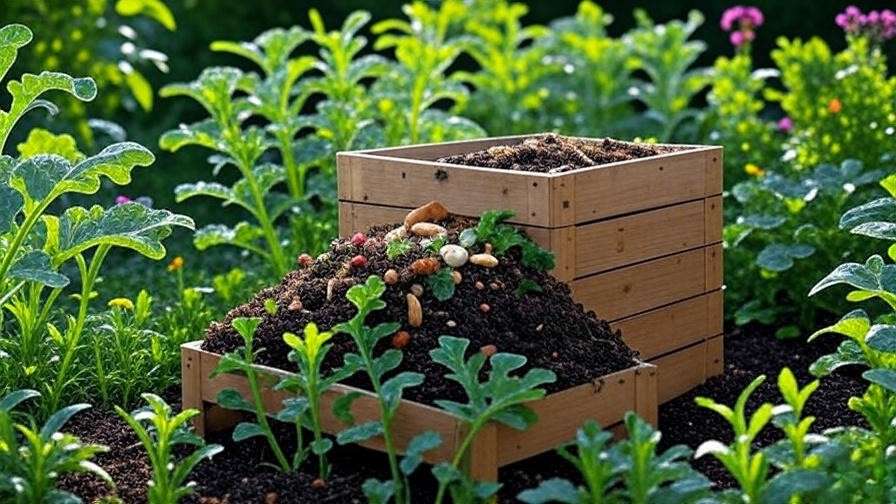
Sourcing Local and Eco-Friendly Materials
Build your compost pile with materials that are abundant and environmentally friendly:
- Kitchen Scraps: Use vegetable peels, coffee grounds, and eggshells from your household.
- Yard Waste: Collect fallen leaves, grass clippings (pesticide-free), and pruned branches.
- Local Manure: Source aged manure from nearby farms or stables, ensuring it’s free of antibiotics or herbicides.
Example: A community garden in Oregon reduced costs by 40% by sourcing free yard waste from local landscaping companies.
Tip: Avoid non-compostable materials like plastics, treated wood, or pet waste, which can contaminate your compost and harm watermelons.
Reducing Waste in Your Garden
Turn your watermelon patch into a zero-waste system:
- Compost Rinds and Vines: After harvest, add watermelon rinds and spent vines to your compost pile. These green materials break down quickly and recycle nutrients back into the soil.
- Closed-Loop Gardening: Use compost to grow watermelons, then compost plant waste to create more compost, creating a sustainable cycle.
- Mulching: Apply a thin layer of compost as mulch to suppress weeds and retain moisture, reducing the need for additional inputs.
Community Composting Resources
Engage with your local community to enhance your composting efforts:
- Composting Programs: Many cities offer free or low-cost compost bins and workshops through municipal programs.
- Co-Ops: Join a gardening co-op to share compost resources and learn from experienced growers.
- Neighborly Sharing: Trade excess compost with neighbors to build community and reduce waste.
Case Study: A Virginia gardening group increased watermelon yields by 15% by pooling resources for a community compost pile, using local coffee shop grounds and yard waste.
FAQs About Compost for Watermelon ❓
Here are answers to common questions gardeners have about using compost for watermelons, designed to address reader concerns and boost SEO with conversational queries.
Q1: Can I use only compost for watermelon, or do I need fertilizer?
A: Compost can provide most nutrients watermelons need, but in poor soils, supplemental organic fertilizers like fish emulsion or bone meal may be necessary. Test your soil to determine deficiencies and apply compost at 1–2 inches per season for best results.
Q2: How often should I add compost to my watermelon plants?
A: Incorporate compost before planting and add a side-dressing once or twice during the growing season, especially when vines start to spread and fruits form. Avoid over-applying to prevent nutrient burn.
Q3: Is manure-based compost safe for watermelons?
A: Yes, if fully aged (6–12 months) to eliminate pathogens and reduce nitrogen intensity. Fresh manure can burn roots and introduce E. coli. Always source from trusted farms.
Q4: What’s the best compost for sandy soils?
A: Compost high in organic matter, like worm castings or leaf-based compost, improves water and nutrient retention in sandy soils. Mix in 2–3 inches before planting and mulch with compost to conserve moisture.
Q5: How do I know if my compost is ready to use?
A: Mature compost is dark, crumbly, and smells earthy, not sour. It should have no recognizable food scraps. Test by planting quick-germinating seeds like radishes; healthy growth confirms readiness.
Conclusion
Growing juicy, flavorful watermelons starts with the right compost. By crafting or choosing the best compost for watermelon, you provide your plants with the nutrients, structure, and microbial life they need to thrive. Whether you’re composting at home with kitchen scraps and yard waste or selecting a high-quality store-bought product, this guide equips you with expert-backed strategies to boost your yield naturally. 🌱 Start composting today, and share your results in the comments below—let’s grow the sweetest watermelons together! 🍉
For more tips, check out our articles on watermelon pruning, soil health, and organic pest control. Visit trusted resources like your local agricultural extension service or the USDA’s website for additional guidance.













